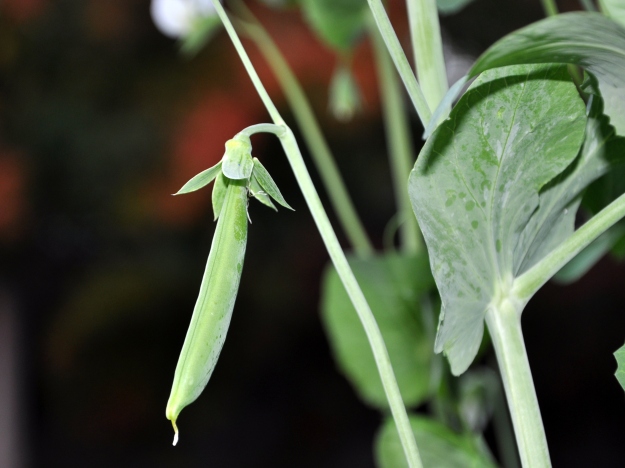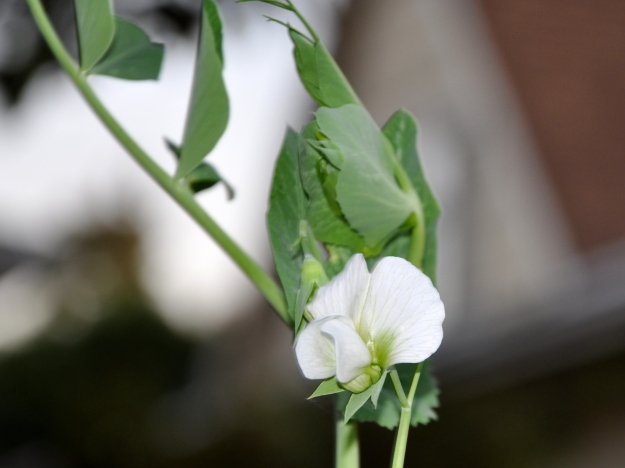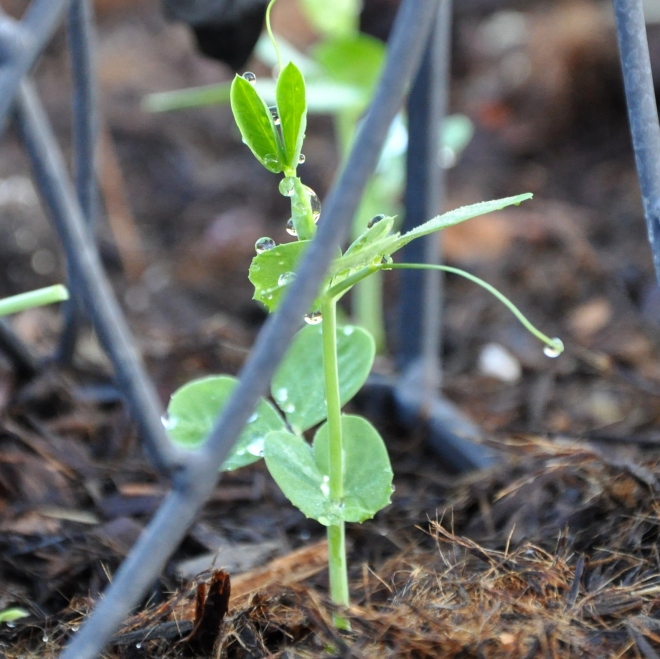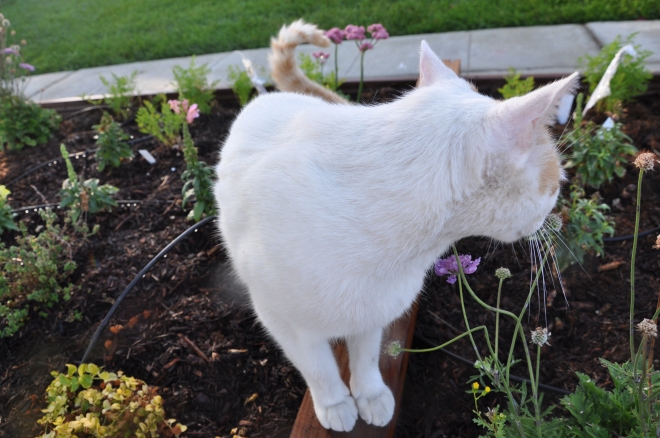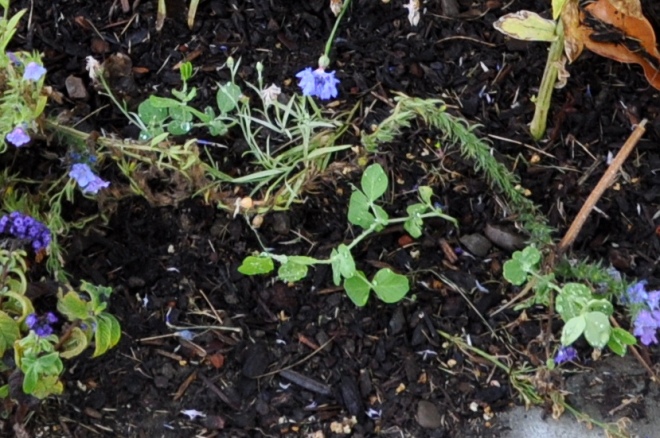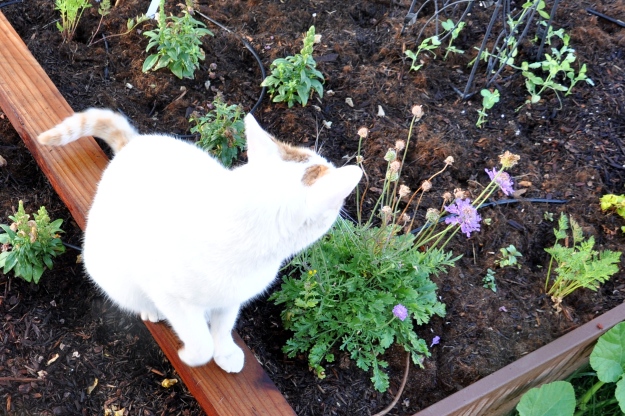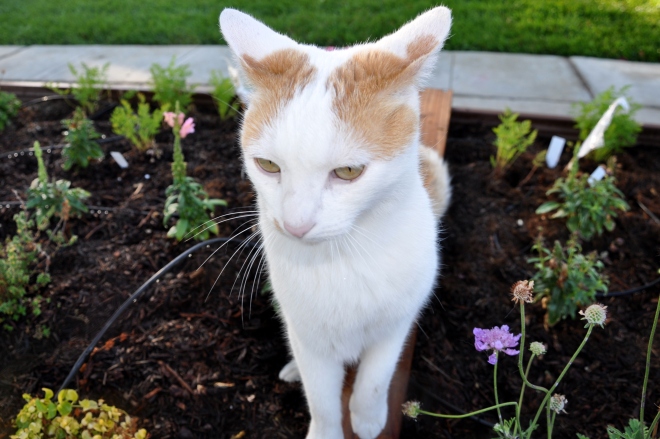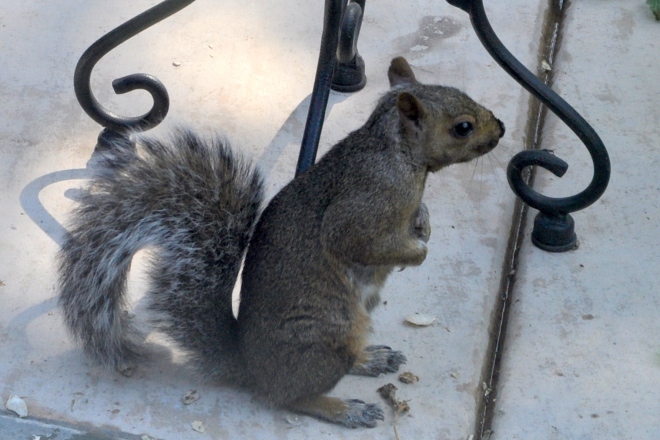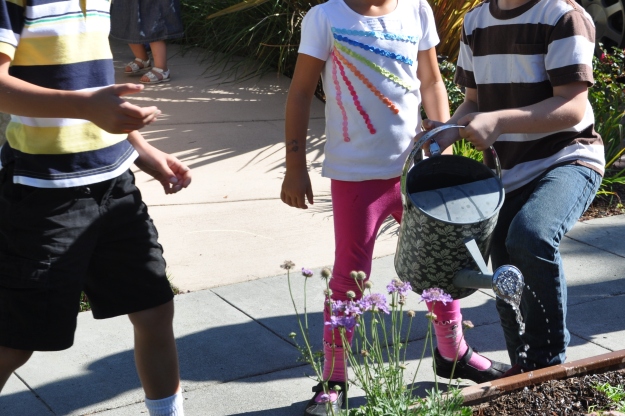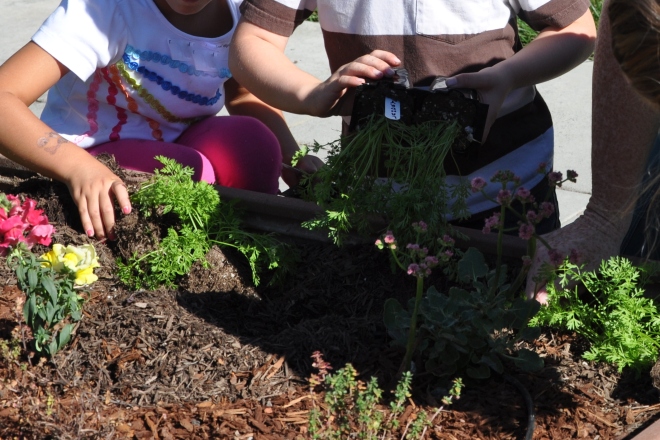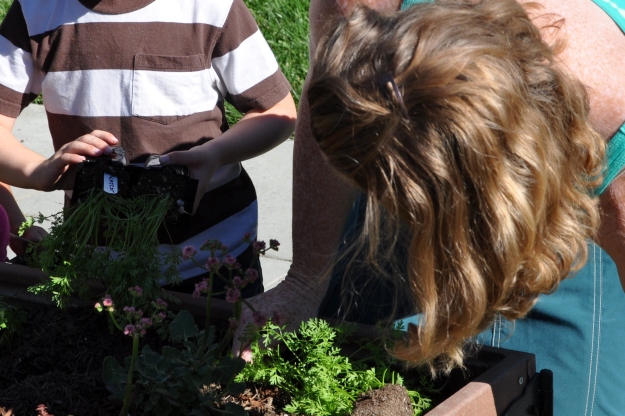
My son’s prized inflatable, pretend snowing in San Jose
Still no rain, and certainly no snow, but we did get some frost last night. This isn’t a big deal for everyone, but it’s a rare occurrence around here. It’s December 4th after all. The tomato plant had to go eventually.

I have lots of frozen peas (and I never stepped foot in the freezer aisle). They look plump and juicy and, well, frozen. Since it’s a winter crop, I’m not sure what to think. The plant doesn’t seem to mind, but it may take a few days for any damage to appear. I’ll let you know.

Frozen peas, available now in your neighborhood garden
Last week I *finally* planted some beats. I soaked the seeds at the same time I planted the peas, but originally planned to put them in the veggie garden out back. The tomato plant hung on and on in one bed, and the strawberries in the other, so I didn’t have room. I planted the beats in the curb garden with the carrots and peas. I hope they’re equally successful, and that I didn’t plant them too late.

Plump and ready
I started my broccoli seeds indoors and all was going well. Somewhat foolishly I started hardening them off, the process of acclimatizing the seeds to their new outdoor home. It would have been better to wait till the holidays were over. I simply forgot about them. They came back inside for water and a rest. Hopefully enough of them will recover so I can make a go of it.
Next up, spring bulbs. My back just hasn’t been up to the task this year, so bags of bulbs sit in the garage waiting for my next move.
I think I’ll go make myself a hot cup of tea while I give this more thought. I hope you’re enjoying your day.

Frosty paw prints
Organized at Heart
I’m posting a series of articles featuring organizing around the holidays this week on my blog Organized at Heart. If the subject interests you, please go take a peak. Today’s blog has a few filing tips (boring) along with beautiful file folders (sweet) to inspire this mundane task.











